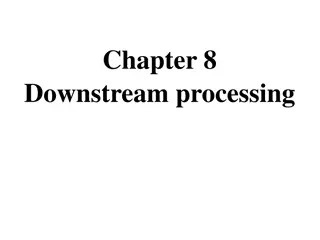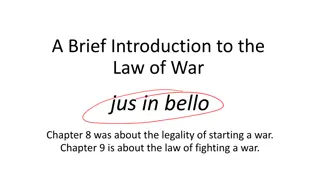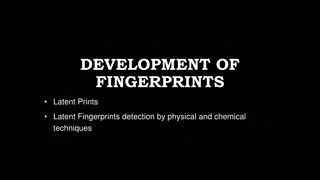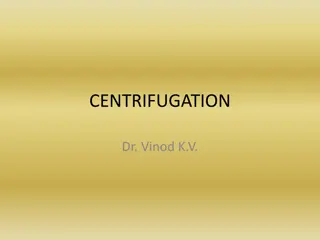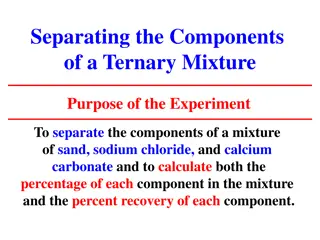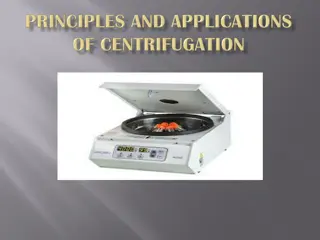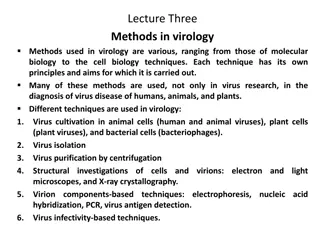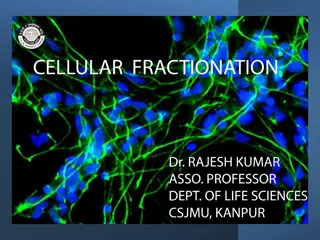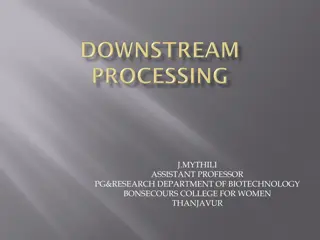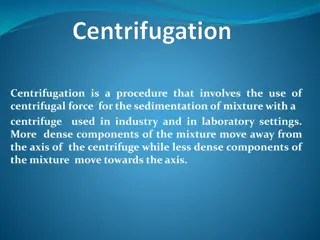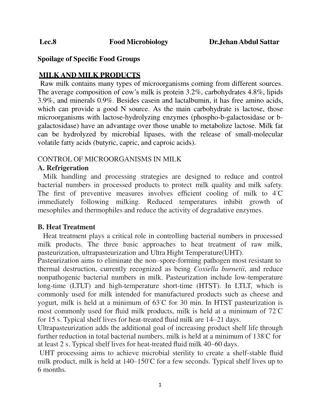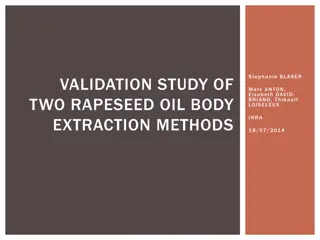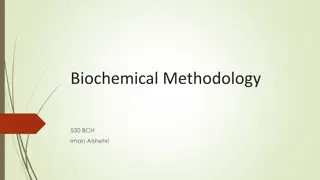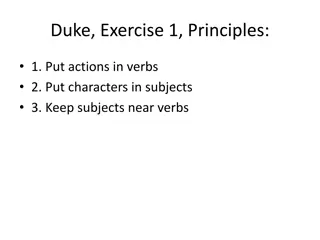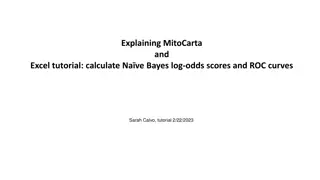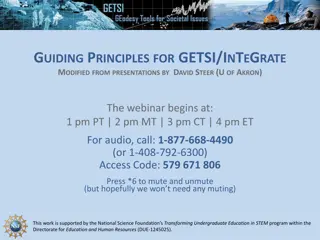Centrifugation Principles and Techniques
Centrifugation is a key method in biotechnology for separating fluids of different densities or liquids from solids. Learn about the principles, types of rotors, sedimentation coefficient, and more in this comprehensive guide.
Download Presentation

Please find below an Image/Link to download the presentation.
The content on the website is provided AS IS for your information and personal use only. It may not be sold, licensed, or shared on other websites without obtaining consent from the author.If you encounter any issues during the download, it is possible that the publisher has removed the file from their server.
You are allowed to download the files provided on this website for personal or commercial use, subject to the condition that they are used lawfully. All files are the property of their respective owners.
The content on the website is provided AS IS for your information and personal use only. It may not be sold, licensed, or shared on other websites without obtaining consent from the author.
E N D
Presentation Transcript
CENTRIFUGATION MRS.S. AMIRTHAM ASSISTANT PROFESSOR PG & RESEARCH DEPARTMENT OF BIOTECHNOLOGY BON SECOURS COLLEGE FOR WOMEN THANJAVUR
INTRODUCTION Centrifuge is a machine , that applies cetrifugal force to separate fluid of different densities or liquids from solids. Separation of compounds depends on migration. The separated components are supernatant and pellet.
PRINCIPLES OF CENTRIFUGATION The centrifuge works using sedimentation principle. The sedimentation principle is , centrifugal force acting on a particle in a solution depends upon a density between particle and medium. The centrifugal acceleration causes , denser objects to move outward in radial direction. Objects that are less dense are displaced and move to the center.
SEDIMENTATION COEFFICIENT AND SEDIMENTATION VELOCITY SEDIMENTATION VELOCITY Sedimentation velocity is an analytical ultracentrifugation method that measures the rate at which molecules move in response to centrifugal force generated in a centrifuge. The centrifugal force acting on particle produces an acceleration. SEDIMENTATION COEFFICIENT The sedimentation coefficient of particle characterizes its sedimentation during centrifugation . It depends on molecular weight and molecular shape.
ROTORS OF CENTRIFUGE TYPES OF ROTOR There are three types of rotor. They are, Fixed angle rotor. Vertical rotor. Swinging bucket rotor.
FIXED ANGLE ROTOR The fixed angle rotor holds the tube at 450 . During centrifugation, the densest particles in the solution ill separate towards the angle of the centripetal force. Dense particles will form a concentrated pellet at the bottom of the tube.
VERTICAL ROTOR In the vertical rotors , the tubes are vertical during the run. The short path length and low k factors of these rotors mean that particle has only a short distance to travel to pellet, reducing the run time for the application.
SWINGING BUCKET ROTOR It is the rotor, in which tubes are located in bucket and those buckets are not rigidly attached certain angle. The rotor allows the tube to change angle during the run. These rotor are usually preferred to rate zonal separation.
ULTRACENTRIFUGE The ultracentrifuge is centrifuge optimized for spinning rotor at very high speeds , capable of generating acceleration as high as 1 000 000g. The principle is, it spins liquid samples at high speeds and thus creates a strong centripetal force which cause pelleting. It is used in molecular biology , biochemistry and cell biology. Ultracentrifuge is of two types they are Preparative and Analytical.
It is a high velocity centrifuge used in the separation of small submicroscopic particle. TYPES OF ULTRACENTRIFUGE PREPARATIVE It is used in pelleting small materials such as membranes, organelles, viruses etc.., It is a high velocity centrifuge used in the analytical process. ANALYTICAL It is used to determine the mass and shape of macromolecules such as protein complexes and rate of sedimentation of molecules.
PREPARATIVE ULTRACENTRIFUGE ANALYTICAL ULTRACENTRIFUGE
SPEE SPEE CEN HIG TRIF ON AN UG W ATI LO D 60,000 *g g- force . It can spun the sample at > 5000 rpm. D D H High speed centrifuges uses 40,000 to CENTRIFUGATION HIGH SPEED Used in the separation of the nucleus , mitochondrial, etc.., Low speed floor- standing centrifuges uses the g- force less than 10,000 rcf. It can spun the sample at < 5000 rpm. Used in cell culture or blood etc.., CENTRIFUGATION LOW SPEED
HIGH SPEED CENTRIFUGATION LOW SPEED CENTRIFUGATION
DIFFERENTIAL CENTRIFUGATION It is used to separate organelles and other sub-cellular particles on the basis of the sedimentation. Differential centrifugation works by a stepwise increase in centrifugation speed. In this centrifugation, the separation occurs based on the size of the particles in differential centrifugation. Its application is , it is used in the biochemistry and cell biology to separate organelles and sub- cellular particles.
DENSITY GRADIENT CENTRIFUGATION Density gradient centrifugation refers to separation method where the substances concentrated in solution of cesium salts or sucrose. The separation occurs based on the density of the particles in density gradient centrifugation . A homogenized solution is used as sample in density gradient centrifugation It is widely used to fractionate cells, viral particles lysosyme etc..,




